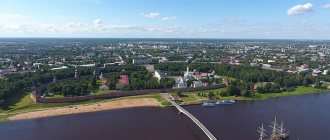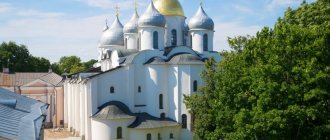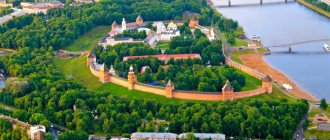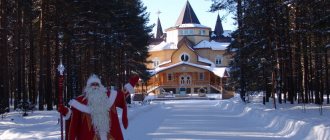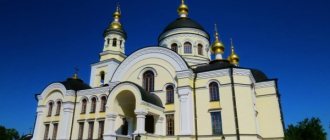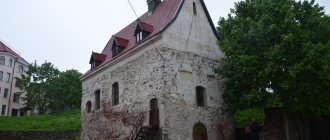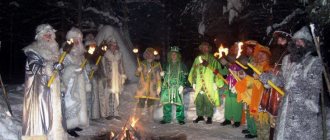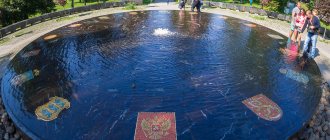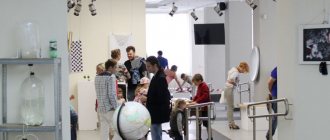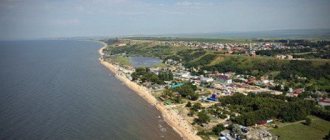I’ll start my first travel story with a trip I took last weekend to Veliky Novgorod. Although this city is very popular among one-day excursions from St. Petersburg, unfortunately, the last time I was there was in my distant childhood, except for a couple of transit passages when I didn’t really get to see anything... So everything was like the first time for me .
Usually I plan all my trips at least a week in advance, but this trip turned out to be unexpectedly spontaneous and rich in impressions.
We left early in the morning from Pushkin. As soon as we drove onto the Moscow highway, we were shocked that after the winter the snow had melted away along with the asphalt. The toughest place is the circle around Tosno - in some holes you can easily leave the entire suspension. But this is the main road of the country, connecting St. Petersburg with Moscow! As soon as we entered the Novgorod region, excellent asphalt began. The navigator happily warned us about all the traffic police ambushes in the bushes, so, having settled down behind some obviously crazy gazelle, we very quickly flew to the entrance to Novgorod.
Historical buildings and monuments
The city resembles an open-air museum; each street has its own history. Children find it interesting to travel through time, especially when adults are able to captivate them with a story.
Novgorod child
The fortress located on the left bank of the river is included in the UNESCO list of architectural monuments and has federal significance as an example of architecture. The wooden structure was founded in the 10th century, and the Kremlin gradually grew around it. The complex is considered a part of history.
Clock ringing
The clock tower is located in the northwestern side of the Kremlin. Similar buildings no longer survive. It is the tallest of the buildings in the complex and is one of the sloping buildings, tilting slightly to the side. It was damaged during the war, the pommel was restored, and the ancient mechanism was restored, marking every 30 minutes by striking a bell.
Kokuy Tower in the Kremlin
The solid quadrangular structure reaches a height of 38.5 meters and is the highest building of the complex. The wide base gradually becomes thinner towards the upper tiers, turning into a polyhedron. It had a defensive function; at the last levels there was an observation post. Now there is an observation deck, the entrance to which runs through one of the through galleries.
Yaroslav's yard
The complex is located on the right bank opposite Detinets, closer to the southern part. It has historical significance, since once upon a time a council gathered at that place, there was brisk trade with overseas merchants, and the berths received merchant ships. In warehouses, accounting, labeling, and preparation of goods for shipment were carried out. Later, Gostiny Dvor appeared on the territory.
Gate tower of Gostiny Dvor
Wooden city buildings often burned down in fires, and fires in shopping arcades were especially devastating. By decree of Peter I, their replacement with stone buildings began. By the 18th century, almost all buildings were made of brick. Arches marked the entrance to the Courtyard. A two-story building with a mezzanine was erected in the center.
It was intended to house security guards, trading offices, and warehouses. Later, a museum of religious objects, antiquities, and artistic forging settled in it.
Alekseevskaya Tower
The city's southern defense line has almost disappeared. Only one tower remained from it, which is often called the White Tower. The round base is 17 meters in diameter, the lower tiers are made of large cobblestones and lined with brick. Thick walls and loophole windows demonstrate power and inaccessibility. Most recently, the tower opened to visitors and operates as a museum of ancient Russian weapons.
Belfry
The ringing of bells spreads everywhere, the ancient bell tower still regularly carries out its service, towering over the streets and squares since the 13th century. It was rebuilt several times, restored after the fall, restored without changing its original outline and only becoming taller. The Sofia belfry is considered the largest and oldest bell structure.
Faceted or Sovereign Chamber
Of the entire complex of the Vladychny Court, only this one has survived. The architectural monument belongs to the brick Gothic style of the 15th century and is included in the UNESCO lists as one of the oldest civil buildings. It is very interesting to look at the surviving frescoes, in which the interweaving of Byzantine and Russian painting styles is clearly visible. On the third floor there is a bright hall where trials, divine services, and the selection of priests took place.
Now within its walls there is an exhibition of objects of decorative and applied art, including samples of gold and silver jewelry by ancient masters, temple utensils, and artifacts.
Monument "Millennium of Russia"
The date of formation of the Russian state is considered to be the proclamation of Rurik as Prince of Rus'. The opening of the monument took place in 1862. It is located in the center. The authors of the monument were M. Mikeshin, I. Schroeder, W. Hartmann. It is made in the form of a bell, on which 128 figures are located in 3 tiers:
- the upper tier symbolizes the church, country and autocracy;
- middle - 6 main historical eras;
- on the lower one are carved high reliefs of 109 famous people, including educators, statesmen, military leaders, heroes, artists and writers.
Victory Monument
The monument was opened in 1974, on the 30th anniversary of the liberation of Novgorod from the fascist invaders, and is classified as a cultural heritage site. The central figure of the composition was an equestrian sculpture, behind it a high tower topped with a boat with military attributes. Bas-reliefs on the walls depict the main stages of the war and the battles for Novgorod.
Hanseatic fountain - water “negotiation table”
Fountain with flags of the countries of the Hanseatic League / photo by S. Makhlov
Hansa is a powerful trade union of 130 cities that arose in the 13th century. Of the Russian cities, only Novgorod and Pskov were included in it.
In the 80s of the 20th century, the Union was recreated, and in 2009 a special sign and fountain were installed in Veliky Novgorod.
The black granite fountain is stylized as a negotiation table. It depicts the coats of arms of 16 countries of the Hanseatic League in modern times. On sunny days, the images seem to glow from under the water. Countries are not signed, test your knowledge of coats of arms.
How to get there
You will find the fountain on the territory of Yaroslav's courtyard.
Temples and monasteries
There are many unique buildings here dating back to the Middle Ages, and what is more surprising, are still in use.
Church of the Transfiguration
The ideal simplicity of lines and precise proportions, characteristic of urban architecture, made the building a canonical example. It is the only place where ancient frescoes from the 13th century, created by Theophanes the Greek, have been preserved. The beauty and grandeur of the temple fascinates everyone who steps under its arches. The paints in the paintings still convey all the shades, colors, reflections of shadows in the figure of Christ and the six-winged angels surrounding him.
Znamensky Cathedral
It is located on the same street, not far from the Transfiguration Church. Built on the site of a church dismantled in the 14th century. The five-domed majestic cathedral was erected in the 17th century and consecrated by Metropolitan Cornelius. The interior was painted by a team of Kostroma icon painters, is well preserved, and is interesting as an example of narrative painting. The most famous:
- Magi;
- Last Judgment;
- Annunciation;
- 4 horsemen of the Apocalypse.
St. George's Monastery
Erected in the 11th century at the source of the Volkhov River, the monastery was first built of wood. In the next century, reconstruction and renovation of buildings began, replacing them with stone ones. The founder of the monastery is considered to be Yaroslav the Wise. The complex of the 2nd century was the richest and most significant in the Novgorod region.
The architectural ensemble is dominated by the bell tower and St. George's Cathedral, the interior of which is decorated with ancient paintings. This is one of the attractions in the vicinity of Veliky Novgorod that is worth seeing in March, combining the review with a walk along the banks of the river and lake.
Nikolo-Vyazhishchi Monastery
It was founded in the 14th century and is 12 km away. This priceless architectural monument is still a convent with a traditional way of life that has changed little over the past centuries. The relics of St. Euthymius, ancient icons in beautiful frames are kept here, the walls are painted with frescoes on biblical themes.
Yaroslav's yard
Stop by here during your New Year's excursions around Veliky Novgorod. This is a small territory that served as the home of the Novgorod princes since the reign of Yaroslav the Wise. It is believed that the foundation of this architectural ensemble occurred in the middle of the 11th century. The initial goal was the summer residence of the Kyiv prince Yaroslav. The building was used for the same purpose until the reign of Ivan IV.
Today it is a historical museum, the exhibits of which will say a lot about what this place had to see during its long history
Yaroslav's Dvorishche, the oldest princely residence, ideally emphasizes the embankment of winter Veliky Novgorod
Spend unforgettable New Year holidays in Novgorod!
Competitive prices for tours to Novgorod for the New Year
Excursions around Veliky Novgorod, there is something to see today
Educational programs for children and adults in an entertaining way introduce new aspects of long-known buildings, streets and parks. The city takes on the appearance of an epic hero, powerful and kind.
Walks with mayor Sbyslav
The miracles of Novgorod are amazing and varied. In Lake Ilmen, Sadko caught a golden feather fish, and from the pier of the Marketplace he set off on a long journey. Prince Vladimir Yaroslavovich ruled here, fortress walls were built to intimidate enemies. Novgorod stood for many centuries and was called the Great. Mayor Sbyslav will talk about these and other events during an interactive tour of the Kremlin and cathedrals. The bright antique costume, light style, and entertaining form of stories will hold attention for a long time and will become a series of discoveries for all participants in the program.
Kremlin Park
The historical and natural complex is located in the historical center near the Novgorod Detinets, surrounding the park on three sides. Initially it was called the Summer Garden. It quickly became a favorite walking place for the townspeople. It hosts most events, a children's playground, and a monument to Rachmaninov. A fountain refreshes the air, there is a summer stage, a chess house, and tennis courts.
Fountain "Sadko"
The epic about the guslar who made a great bet with Novgorod merchants is well known. He went on a journey, and was not intimidated by the formidable Sea King; the beautiful Volkhova fell in love with him and saved him from the wrath of the lord of the sea depths. It was this image that the sculptor Kurylev chose for the main city fountain, which flaunts in the Kremlin Park.
Hanseatic fountain
It was erected in 2009 for the opening of a festival dedicated to the development of trade and tourism. The latest trends and technologies were used. The base is a granite disk; water gradually spills from the center, slowly spreading over the surface and falling onto large stones located around the perimeter. The edges of the bowl are decorated with the coats of arms of the countries of the Hanseatic League. Newlyweds come to the fountain to take photos and make a wish.
Kremlin beach
Cozy and clean, it is on the river bank near the Kremlin wall. It is equipped with changing rooms, umbrellas, and children's playgrounds. Perfect for a family holiday in the summer heat.
Pedestrian bridge
Initially, the city was built on both banks of the river, with a bridge connecting the Trade and Sofia sides. The first documentary evidence of it dates back to the 12th century. It had practical and strategic significance, was constantly rebuilt and restored, strengthened, and acquired new features. During the war it was blown up and rebuilt again after the victory. The project, taking into account modern requirements, was created in 1985 and, according to its technical characteristics, can accommodate 8 thousand people at a time.
Rurik settlement
After the settlement began to expand its borders, it began to be called New, and Gorodishche - Old. It remained a craft, trade and military center for a long time. Thanks to archaeological excavations and finds, it was possible to establish its role in the further development of Novgorod. The monument stands opposite the Yuriev Monastery, 2 km south of the center.
Trinity excavation
Archaeological research has been going on for a long time, and it was found:
about 40 buildings of the 10th–15th centuries; letters on birch bark; the oldest book is the Novgorod Codex.
It is interesting to visit the excavation site, listen to the stories of archaeologists and historians about the finds, and look at their work.
What to bring as a souvenir
What is Veliky Novgorod associated with? Of course, with aromatic herbs, berries and honey. But the choice of souvenirs in the city is much larger, so you will definitely find a gift to your liking. And so that you don’t get lost in their diversity, we have made a selection of things that these places are famous for:
- Mittens are a symbol of the city. It is believed that this is where the name of this item of clothing came from. Trade shops and shops offer more than a hundred types of mittens: from simple knitted ones to fur ones, generously decorated with embroidery and beads.
- The Valdai bell is known throughout Russia for its clear sound. And they sell brass souvenirs in any store or kiosk. Be sure that you will not find such bells anywhere else.
Valdai bells as a souvenir of the trip.
- Printed gingerbreads , although not as advertised as Tula ones, are noticeably older from Ichtoria. Real sweets are dark brown in color with a transparent white glaze. You will find them in any grocery store or specialized souvenir shops.
- Honey in Novgorod is sold both in classic jars and in birch bark jars. The latter are more expensive, but look elegant. Perfect for souvenirs.
Those with a sweet tooth will be delighted with local honey.
- Candied fruits from the oven are also a local pride. They are made from rhubarb, cranberries, pumpkin and gooseberries. The packaging of healthy sweets is also interesting: the bags depict characters from a theatrical tour of the Kremlin - mayor Sbyslav Yakunovich, mayor Evfimiya, Agafya Melisentovna and Zabava Putyatishna. You can buy dried fruits in the “Red Izba” store at the address: pl. Sennaya, 5.
- fruit and herbal jam only in the Novgorod lands. Extravagant tastes - fireweed and meadowsweet, ginger and mint, lingonberries and pine cones, etc. Prices start at 120 rubles per jar.
- Products made by local craftsmen from birch bark or wood.
Products made from birch bark will decorate any home!
When looking for souvenirs, pay attention to specialized stores:
- "Red Izba" - pl. Sennaya, 5;
- "Globus" - at the address: st. Germana, 27. Here you will always find guides and maps of the city;
- "Lavka-Zavod-bar" at - st. Germana, 2;
- “Novgorod Delicacy” - Sennaya Square;
- "Sloboda" - st. Studencheskaya, 2.
Marina from Moscow writes in her review:
“Novgorod candied fruits are our favorite sweet. You have never seen such delicious pumpkin and cranberry sweets anywhere else. We always bring them as souvenirs.”
Museums and theaters of Veliky Novgorod - attractions that you can see in winter
Their visit does not depend on weather conditions, you can spend your time profitably by organizing a family trip to an exhibition or performance.
Center for Musical Antiquities of V. I. Povetkin
Few people know that the list of Russian folk instruments is not limited to the gusli, balalaika and rattles. Restorers are carefully working to restore nozzles, zhaleks and other instruments, restoring their ability to sound, holding concerts and more exciting lectures - travel, introducing traditional clothing, recipes of national cuisine, ritual songs and games.
Vitoslavlitsy: open-air museum of wooden architecture
Near the shore of Lake Myachino there is a unique complex of wooden buildings. It is located near the Yuryev Monastery. It is very convenient to combine sightseeing of both attractions. The history of the village begins in the 11th century, when there were houses, large and small monasteries, and chapels here. Time passed and nothing remained but landscape and memory. In 1960 they decided to create a museum of ancient buildings, of which there are about 70.
The oldest tent scar is the Assumption Church. The buildings are masterpieces of wooden architecture, transporting visitors to ancient times.
Art Museum
The building of the Noble Assembly housed a huge exhibition of paintings, sculptures, sketches, drawings, and miniatures. It was built in compliance with classical proportions; 2 spacious wings extend from the central facade, where exhibition galleries with unique objects are located. There are 9 halls in total. The collections contain works by M. Vrubel, Bryullov, A. Aivazovsky, M. Antokolsky, I. Repin.
Museum of Artistic Culture of the Novgorod Land
It was founded on the former square of the Desyatinny Monastery, which is an architectural monument. Over time, the layout, territory and a large proportion of buildings have been preserved. One wing functions as an exhibition hall, where you can see the work of local artists and craftsmen.
Academic Drama Theater named after. F. M. Dostoevsky
Traditionally, theatrical performances were held on major and minor holidays; the fame of the art of buffoons resounded far beyond the borders of the region. At first, temporary stages or halls in the mansions of the nobility were used; the first permanent theater opened in 1825. Classics and avant-garde performances were staged, and much attention was paid to children's repertoire in the 20th century. Almost 160 years later, the theater moved to a new building.
The original appearance resembles a temple where the imperishable art of transformation lives.
Novgorod-on-Volkhov
The main railway station was built in traditional Novgorod style. The project was carried out by I. Yavein. After the devastating bombing, many transport hubs were destroyed; it was necessary not only to restore traffic, but also to create a beautiful modern station building. The architect chose an antique style with well-recognized semicircular rows of windows, strict lines and proportionate proportions. The snow-white walls are visible from afar; inside, passengers will find comfortable lounges and convenient passages to the boarding areas.
Leisure
In Veliky Novgorod, almost every district has ice skating rinks - there are both indoor and outdoor areas. The skating rink on the territory of the Kremlin Park is of tourist interest. It is open daily until 10 pm. There are skate rentals for children and adults, as well as the opportunity to visit the skating rink with your own skates. Tubing rides are organized on the Kremlin shaft - the slides are not equipped; usually locals ride here with their “cheesecakes”.
For more active winter activities, you should go outside the city. In the Novgorod region there are several large winter recreation centers with entertainment for the whole family. If you have a free day, it's worth going to one of these resorts:
- Ski resort "Mstinskie Gorki" . The resort is located near Malaya Vishera, 130 km from Veliky Novgorod. Tourists can enjoy 4 trails of varying difficulty levels, designated areas for snow tubing, a sauna, an outdoor swimming pool, guest houses, barbecue rentals and other services.
- Eco-resort "Lyubogorye" . The distance from Veliky Novgorod is 180 km. In winter, the resort has 7 trails for skiers and snowboarders. There is a tubing slope and a forest trail for cross-country skiing. You can visit the bathhouse or rent a gazebo. Nearby is the open-air museum “Slavic Village of the 10th Century”.
Panoramic view of the Lyubogorye resort
Details: Ski resorts of the Novgorod region
Natural beauty
The picturesque surroundings attract attention at any time. The delicate lace of frost on the trees imperceptibly changes with young sticky leaves, walks bring an unforgettable experience.
Volkhov River and Lake Ilmen
Epics and legends about the land of Novgorod necessarily mention these names. The source of the river is a lake stretching for 45 km. The city stands on both sides of a river bed that stretches for 224 km through several regions, the banks are connected by bridges.
Lake Ilmen is large and full-flowing, more like a sea; the volume of water ensures the flow of 50 large and small rivers.
Motor ship excursions along the Volkhov to Lake Ilmen
In the warm season, cruises from St. Petersburg are very popular; the route runs through Ladoga and ends at the city walls. Departures are daily, travel time is 1.5 - 2 hours, there are discounts on children's tickets.
The Victory Monument is the only equestrian statue in Novgorod
Victory Monument / photo S. Makhlov
The monument was erected in the year of the 30th anniversary of the liberation of Novgorod from the Nazis.
An interesting detail is that under the horse’s belly there is a mangled swastika. Behind the statue is a 23.5 m high brick tower. It is not possible to climb to the observation deck - the entrance is closed due to emergency conditions.
At the foot there is a small exhibition of military equipment: a T-70 light tank and 76 mm guns.
How to get there
The monument is located in the southern part of the Kremlin Park on Catherine Hill. It can be seen from the Settlement and from the bridge.
What to visit in Veliky Novgorod
The frost and sun of January are unlikely to force anyone to stay at home, especially during school holidays. There are many attractions in Veliky Novgorod, the list of where to go and what interesting things you can see in winter in 1,2,3 days is quite diverse:
- Novgorod Kremlin;
- Saint Sophia Cathedral;
- Vitoslavlitsy;
- Lord's Chamber;
- House-museums of Dostoevsky, Suvorov, Uspensky and Nekrasov;
- museums
If the trip is designed for 1 day, then it is more logical to choose objects within the city, taking into account weather conditions. It is more convenient to arrange attractions in the vicinity of Novgorod according to the territory that they are nearby. It’s worth leaving for spring to visit fountains, natural parks, nature reserves and distant temples, and boat trips. Here, exhibitions in museums are regularly updated, exhibitions come, so to know what to do and what new things you can visit in Veliky Novgorod, you just need to look at the posters.
Festivals and holidays
Several dozen festivals take place on Novgorod land throughout the year. Most of them are dedicated to summer Slavic and Russian holidays. But even in the winter months there are several interesting festivals that are worth visiting.
December in Veliky Novgorod begins with the family holiday “Winter has come! Brought the codfish!” . The holiday takes place on the territory of the Kremlin. Instead of the usual Father Frost, visitors are greeted by the more severe pagan Father Treskun. The program includes ancient Russian fun and games, performances by folk groups.
During the New Year holidays, the Fairytale New Year . Adults and young visitors can get acquainted with the characters of Russian fairy tales and epics. The entertainment program includes quests with the participation of Baba Yaga and Kikimora, master classes on ancient crafts, competitions and games. During the festival, there is a fair on the territory of Vitoslavlits, where you can buy handmade souvenirs from Novgorod craftsmen.
Souvenir rows at the winter fair in Veliky Novgorod Photo: © Andrey Panin
At the end of December, the main Christmas tree of Veliky Novgorod is installed on the main square of the city, Sofia Square. Usually, the first lighting of the lights on the Christmas tree takes place in a solemn atmosphere. On New Year's Eve, mass festivities, performances by creative groups and fireworks are organized on the square.
Maslenitsa festivities take place at several venues, including on the territory of the Novgorod Kremlin and in the Vitoslavlitsy Museum. festival “Demyansk Bridgehead” is held in the city of Demyansk (120 km from Veliky Novgorod) . Reenactments of the battles with the fascist invaders that took place on this land in 1943 are organized for festival guests.
The main Christmas tree of the city on Sophia Square Photo: © Vladislav Korenkov
Attractions on the Trade Side
This is the right bank of the Volkhov River. As a rule, people come here after getting acquainted with the main attractions in Novgorod Detinets.
Arcade of Gostiny Dvor
A historical building erected in the 18th century. The only surviving fragment of Gostiny Dvor after destruction during the Great Patriotic War. The arcade is made in the style of strict classicism. In 1956, during the demolition of the remains of the Gostiny Dvor buildings, the arcade was reconstructed and extended by several sections to maintain symmetry. The surviving arcade is one of the symbols of Yaroslav's courtyard and Torg.
Alexander Nevsky Embankment
Located on the right bank of the Volkhov River. It runs from the arcade of Gostiny Dvor to the Church of Boris and Gleb. The length of the embankment is 1.5 km. The general appearance of the Nevsky embankment was created in the 18th century. Since then, it has been landscaped and reconstructed several times - shrubs and trees were planted, monuments and art objects were installed. The nearby historical buildings make the embankment especially picturesque.
Gate tower of Gostiny Dvor
Built in the 17th century. The three-story building has two passage arches. An octagonal tower topped with a tent rises above the middle part of the building. Along the tanks from it in the lower part there are passage arches to Gostiny Dvor. In the premises of the tower there is an exhibition of Christian antiquities of the 11th-19th centuries, where about 300 works of non-ferrous metals are exhibited. The observation tower offers excellent views of the city.
Hanseatic fountain
Located on the territory of Yaroslav's courtyard. It has an unusual appearance - there are no gushing jets of water in it. Instead of the usual bowl, there is a granite pool in black. In the middle of the bowl there is a small spring, from which water spreads over the pool and the surrounding stones. Along the perimeter of the basin are the coats of arms of the countries that are part of the modern Hanseatic League. The very shape of the circle of the pool symbolizes the negotiation table.
St. Nicholas Cathedral
One of the most ancient cathedrals in the city. It was founded in 1113. It is located in Yaroslav's courtyard and is considered the main architectural structure among the Torg ensemble. The cathedral was built according to the traditions of Kyiv religious architecture. This is a grandiose six-pillar structure with five chapters with a restrained and strict façade design. Several fragments have survived from the frescoes with which the walls were painted.
Church of Paraskeva-Pyatnitsa at Torg
It was first mentioned in ancient chronicles in 1207. The church was rebuilt several times, but its modern appearance allows us to imagine its original appearance. During the restoration, layers of plaster were removed from the ancient masonry of the 13th-16th centuries. The 18th-century dome has been preserved unchanged. The church houses a museum exhibition telling about ancient Novgorod architecture.
Temple of the Myrrh-Bearing Women
Built in the 1510th century on the site where churches had previously been built for several centuries. It was the “family” church of the family of the merchant Syrkov, who financed the construction. The temple is single-domed. On its western side there is a belfry. One of the three floors of the temple is located below ground level. The main upper floor is accessed by two staircases with wooden porches. The church premises are occupied by a cultural center for children.
Monument to a girl-tourist
One of the unusual modern monuments in Veliky Novgorod. It is installed near the pedestrian bridge over the Volkhov River. The monument depicts a girl tourist, tired from a long walk and sitting down to rest on the parapet. The girl has her shoes kicked off and her head tilted back, which gives the sculpture a romantic look. At the opening of the monument in 2009, Dmitry Medvedev was present, who even took a photo next to the monument.
Church of Boris and Gleb on Plotniki
It is a cultural heritage site and is protected by UNESCO. Built in 1536 in a record short time - 5 months. Presumably the church was built on the foundation of a wooden church that previously stood here, which partially determined the construction plan. The five-domed brick church was built according to the traditions of Novgorod architecture. Part of the ancient iconostasis is currently kept in the Novgorod Museum.
Monument to Alexander Nevsky
Installed in 1985 near the embankment and bridge named after the great commander. The design of the monument was created by the architect Isakovich and executed by the sculptor Yuri Chernov. Nevsky walks forward, raising his head to the sky, and a cloak flutters behind his shoulders. His sword is sheathed. From a certain angle and lighting, it seems that the Grand Duke has wings behind his back. His face expresses openness and confidence.
Center for Musical Antiquities of V. I. Povetkin
An unusual and unique museum. The founder of the museum, Vladimir Povetkin, based on archaeological debris, created a collection of musical instruments of the 10th-15th centuries, and also voiced it. Vladimir Ivanovich himself developed an interesting technique for reconstructing beeps, sniffles, gusli, and jew's harps. Povetkin’s work to restore the sound of ancient instruments is continued by specialists in musical archeology.
Church of Theodore Stratilates on the Stream
The Orthodox church was built in the 1360s. Currently, a branch of the Novgorod Museum is located within its walls. The church building is made in the traditional style of Novgorod architecture and is an architectural monument of the Middle Ages. The church preserves fragments of frescoes from the 14th century, which are made in brown and red tones. On the outside of the church, scientists have read some medieval humorous graffiti.
Znamensky Cathedral
Founded in 1682 on the site of a 14th century church. The temple burned down several times; during the Great Patriotic War, at one time it housed German barracks. In the 20th century, large-scale reconstruction work was carried out on the cathedral, including the restoration of wall frescoes by Moscow artists. The features of the cathedral clearly show the traditions of Central Russian architecture, preserved despite numerous reconstructions.
Church of the Transfiguration on Ilyin Street
Built in 1374. The uniqueness of the church is that it preserves frescoes by the icon painter Theophanes the Greek, made in 1378. Externally, the church looks monumental and elegant, while it clearly exhibits architectural features traditional for that time. The facades of the temple are richly decorated with arches, narrow lancet windows, brick ornaments, relief and carved crosses.
Terrain features
1. Weather. Veliky Novgorod and St. Petersburg are generally very similar in this component. So don't forget to take an umbrella or raincoat and warm clothes.
2. Where to eat after arrival. Not far from the station, on the right side of Voskresensky Boulevard, there is a cozy cafe Gourmetto, where you can relax after the journey and drink inexpensive coffee.
3. Taxi in Novgorod. The city has a fairly well-developed public transport network, but if you come in a small group, a local, very inexpensive taxi will be a good alternative.
Here are some companies: +7 city taxi company; +7 taxi Mezhgorod, +7 taxi Maximum, +7 company Rus, +7 24-hour taxi “777-666”
If you do not want to organize your trip to Novgorod yourself, take the opportunity to book an excursion by clicking on the block below.
Museum of Artistic Culture of Novgorod - interactively about the important
The museum's holdings include more than 6,500 exhibits.
It will be interesting here:
- be transported to a porcelain factory - the interior of the workshop in the form of a forge, baked brick, a feeling of heat, the shine of “Kuznetsov porcelain” with a cobalt coating,
- learn the history of 25 Novgorod monasteries,
- play numerous art games and quest games.
How to get there
The museum is located in the sister building of the Desyatinny Monastery (Desiatinny Monastery, 3). Closed on Monday.
